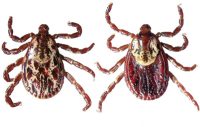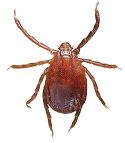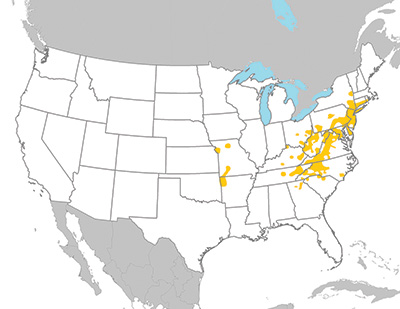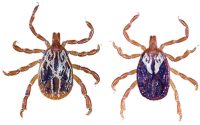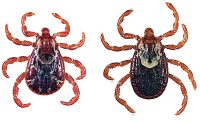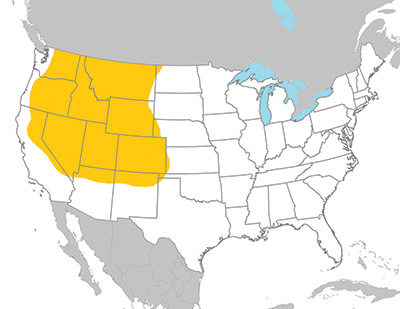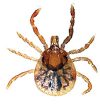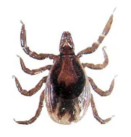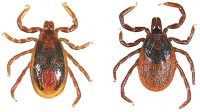Free printed copies of pest alerts are available.
Introduction
Ticks and tick-borne diseases (TBDs) pose a major public health concern in the United States. Sixteen of the eighteen TBDs in the U.S. are known to infect humans. The most recent data shows that Lyme disease accounts for ~67% of all reported human vector-borne disease, with an estimated 476,000 cases annually. TBDs are most often spread by the bite of ticks but may also be spread by blood transfusion.
Tick Life Cycle
Most tick life cycles include four stages: egg, six-legged larva, eight-legged nymph and adult. Each life stage varies in size and color for each tick species. Ticks need a blood meal at every life stage after hatching to survive and grow. Ticks can feed on mammals, birds, reptiles and amphibians. Most ticks prefer a different host animal at each life stage. Ticks are most active in the spring, summer and fall; however, the adults of some species are active in the winter. In the warmer areas of the U.S., ticks may be active all year long.
Tick Identification
American Dog Tick
(Dermacentor variabilis & D. similis)
Reddish brown in color with white “lightning bolt” markings on the back. These large ticks actively seek hosts. May be called “wood ticks” in certain regions. One species exists east of the Rocky Mountains and a newly described species only exists west of the Rockies.
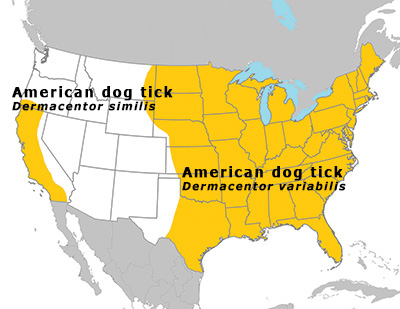
Asian Longhorned Tick
(Haemaphysalis longicornis)
Male Asian longhorned ticks have not been detected in North America. All ticks so far collected are female and reproduce asexually. This newly introduced species will feed on humans but is most commonly found on livestock. They resemble the adult brown dog tick but are smaller, redder and lack “eyes.”
Brown Dog Tick
(Rhipicephalus sanguineus)
A rather drab brown tick that can be extremely common on dogs, but uncommon for humans to encounter outside of kennels and animal pens. They occur mainly in and around human settlements and can spend their entire life cycle indoors. It resembles the Asian longhorned tick except that this species has “eyes” on the sides of its body near the second row of legs.
Gulf Coast Tick
(Amblyomma maculatum)
The long mouthparts (if not attached to a host) help differentiate these ticks from the common American dog ticks. The Gulf Coast tick is slowly expanding its range up the Atlantic Coast into Connecticut.
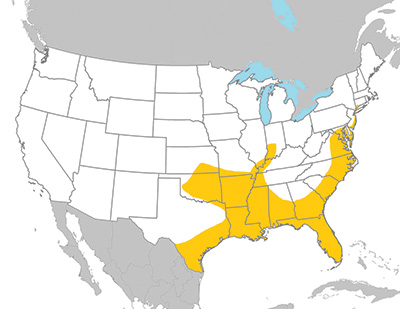
Rocky Mountain Wood Tick
(Dermacentor andersoni)
Looks very similar to the American dog tick but is a brighter red color and found in the Rocky Mountain states in shrublands and open grasslands at subalpine elevations.
Soft Tick
(Ornithodoros spp.)
Very distinct looking from the hard ticks. Unengorged, these ticks have a mottled, textured look. They feed briefly and are typically encountered by humans in rustic cabins. Bites may cause tick-borne relapsing fever.

Lone Star Tick
(Amblyomma americanum)
These ticks are active hunters and can move rather quickly. The iridescent “star” on the back of the adult females is unique.
Lone Star Nymph
These very small nymphs primarily transmit Ehrlichiosis.
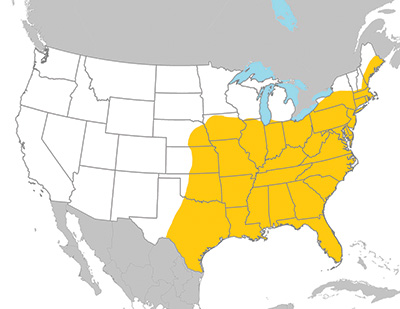
Blacklegged Tick
(Ixodes scapularis)
Also known as “deer ticks,” these small black and red ticks move slowly, and the black legs may help in identifications. Nymphs are extremely small (poppy seed size) and all black. Found east of the Rocky Mountains.
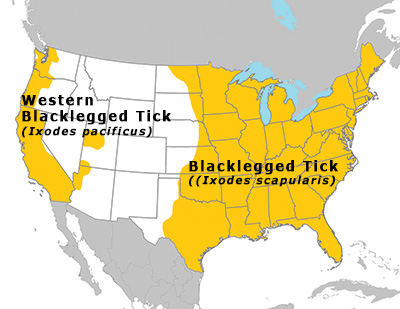
Western Blacklegged Tick
(Ixodes pacificus)
Very similar in appearance to the blacklegged tick, but only found in states west of the Rocky Mountains, especially along the West Coast.
The Spread of Disease
Most ticks wait passively on vegetation for host animals to move by. If a host passes by close enough, the tick will latch on. Ticks spread germs that cause disease through the process of feeding:
■ Once the tick finds a feeding spot, it grasps the skin and cuts into the surface.
■ The tick inserts its feeding tube to suck blood slowly for several days. If the host animal has a TBD, the tick will ingest the germs with the blood.
■ Large amounts of saliva from the tick enters the skin of the host animal during the feeding process. If the tick is carrying germs that will cause a TBD, the germs may be passed on to the host animal in the tick’s saliva.
■ The risk of infection increases with the length of time the ticks are allowed to remain attached. Regular tick checks and prompt tick removal can reduce risk of infection. Generally, ticks must be feeding for several hours before any infections are spread to the host. This timeframe varies by tick species and the type of germ.
■ After feeding, most ticks will drop off and prepare for the next life stage. A tick that picked up germs in a blood meal can then spread those germs to a new host at the next feeding stage.
Tick-borne Disease Symptoms
Many TBDs share symptoms with other common illnesses. The most common symptoms of tick related illnesses are:
■ Fever/chills
■ Severe headache
■ Muscle and joint pain
■ Nausea
■ Cognitive defects
■ Sleep disturbances
■ Rash
Tick-Borne Disease Prevention
Blacklegged ticks (deer ticks) require more humid environments than most other ticks. Yard care practices including removing leaf litter and mowing the lawn short can help reduce tick habitat. Keeping children’s play areas away from wooded edges and moving to areas with short grass and sunshine reduce the chances of a tick encounter.
Tick Removal
Pointy tweezers are best for removing ticks by grabbing the tick as close to the skin as possible and pulling upwards with a slow, steady motion. Online resources like TickSpotters are available for tick identification and risk assessment. TickReport can be used for tick testing to determine if the tick is infected. Ticks can be preserved in a couple of ways. Ticks that are alive can be placed in a sealed vial or bag with a barely damp paper towel and kept in the refrigerator. Dead ticks can be stored in the freezer or in very strong alcohol (>70%).
Tick Species Locations
Tick populations are continually spreading. The maps shown include areas where these ticks have been identified—this does not mean ticks are absent from areas not indicated on the maps. The following maps are available at the Center for Disease Control Regions Where Ticks Live page. Some maps have been modified to provide the most up-to-date information available.
For More Information
For more information on ticks, TBDs, tick control recommendations and state resources visit
■ The CDC Tick website
■ Lyme Disease Association, Inc
■ US Environmental Protection Agency: Repellents
Credits
Centers for Disease Control and Prevention Tick Distribution Maps. Recreated and updated by Scott Larson.
This publication was produced and distributed by USDA-NIFA Regional IPM Centers and the 1862 Land-Grant Universities.
For information about the Pest Alert program, please contact the North Central IPM Center at northcentral@ncipmc.org.
April 2023

